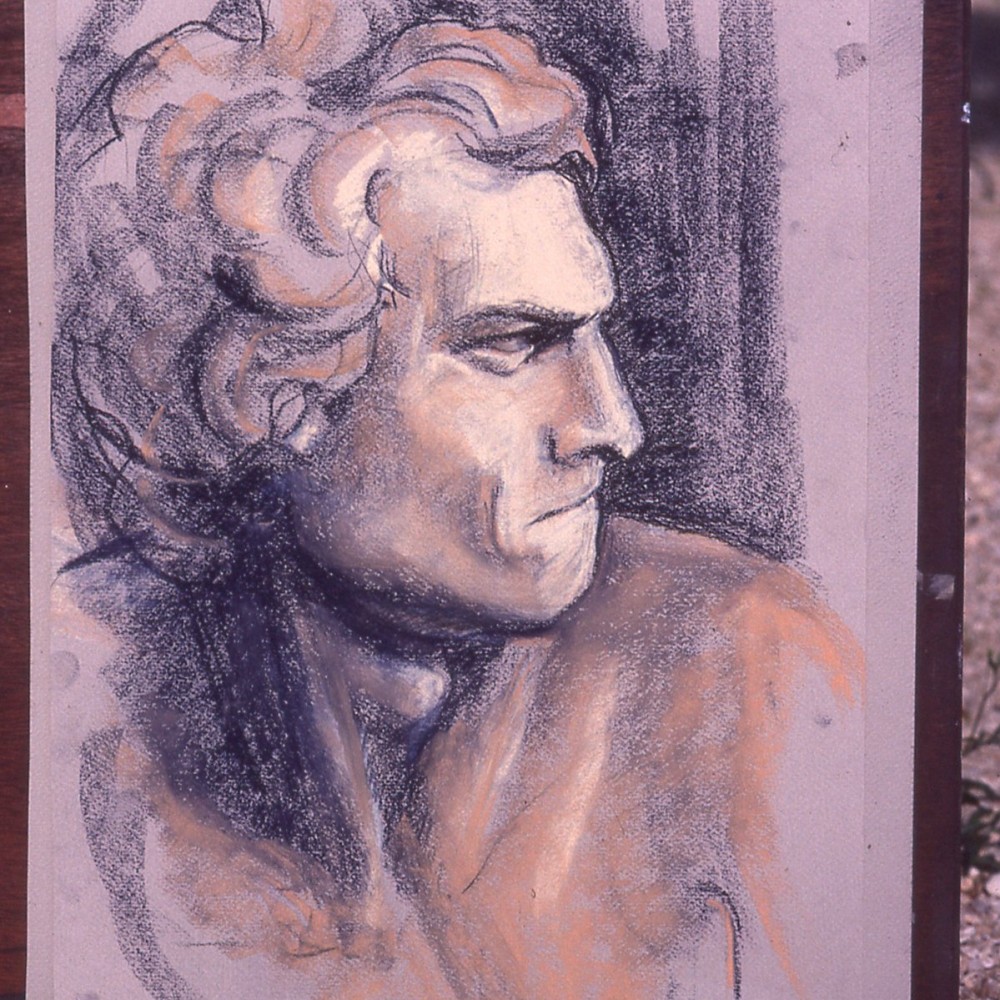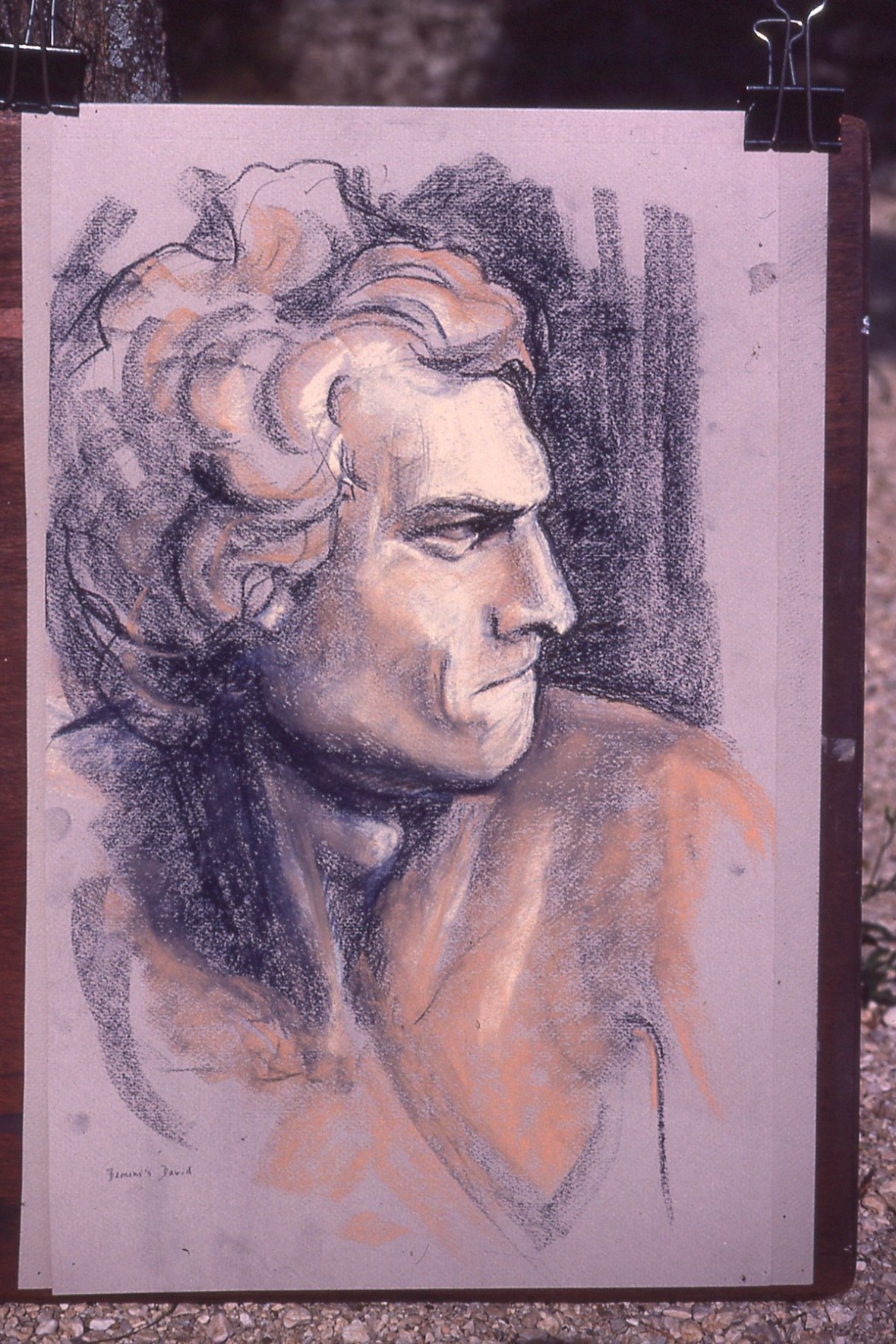Late in 1979, I got another new large stone to work with. It was irregularly shaped, only the bottom was completely flat, a smooth surface. I had what felt like a drastic revelation: I was suddenly able to see a complete figure in the stone! I was able to do some planning and sketching as the carving progressed, directly on the stone as well as on paper.
I worked on Icarus at the school quarry through both 1980 and 1981. It was moved to Pierrot’s personal property that winter, where it was finished in the spring of 1982. Unfortunately photos from 1982 are missing, but the earlier i.p. (in progress) photos are fun to see the evolution of the piece. These also helped me to see and plan the carving.
With Icarus, I was starting to work on my ideas of re-interpreting ancient myths, or extending them and making them contemporary, by telling what I imagined could have been the personal experience of the myth’s subject, from their point of view. I had been thinking about how to infuse figurative work with inner inspiration and new elements of narrative. The human aspects of the myths, emotions left unexplored in classic telling – how Icarus felt when he hit the sea after falling from the sky…
Myths, in every culture, in every time, are about the interaction of human and divine. Often, they are intended to instruct, they are cautionary and didactic tales. I thought about imagining and telling the inside-out of the tale, as a kind of continuation of it perhaps, from a contemporary and personal point of view. What did Icarus feel and do as his wings melted and he fell to the sea? Could he have felt betrayed by his father’s promise of escape from Crete? Betrayed by the exhilaration of flying? Or perhaps he realized he had betrayed himself by disobeying his father’s instructions not to fly too close to the sun; he had forgotten the frail limitations of his father’s handiwork, as well as their shared frailty as mortal humans? And the very human “why me?” – why should he have to be the sacrifice for his father’s freedom and the victim of his defiance of authority here embodied by the sun?
I portrayed Icarus during the last moments before hitting the water: he is looking up in shock and fear, his left hand is in the midst of trying to strip off the remaining left wing, and his right hand is in the reflexive gesture of braking the fall.
Humans are always doing a kind of reactive questioning of experience. The myths may point toward this but don’t illuminate the process or results. Perhaps it is an emotion, or something like an emotion that is generated between the more analytic and narrative events, in order to integrate the experience, coming from somewhere in or near the conscience… a realization of what the story is truly about? On the other hand, maybe this all has something to do with why there are so many permutations of the myths, each pointing to or suggesting some slightly different final resolution or understanding.
These musings led me on to explore which other myths I would like to re-cast… and did, some years later.

